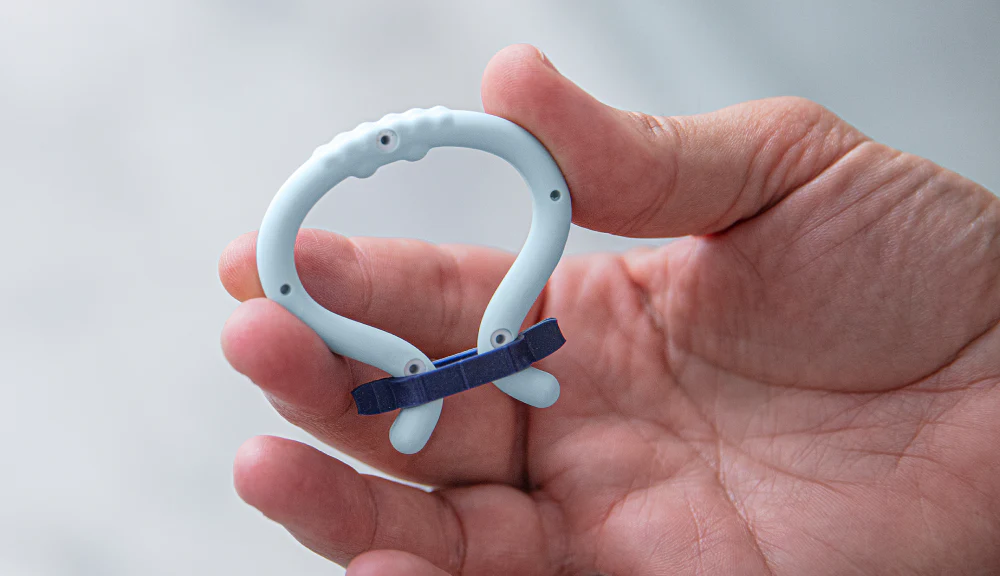Treatment of PTSD

For centuries, humans have understood that some people think, feel and behave differently from others after traumatic events. Whether seen in combat veterans as shell shock or in patients as traumatic neurosis, the public has long known about the symptoms and patterns of post-traumatic stress disorder (PTSD). However, it was not until 1980 that the official diagnosis was added to the Diagnostic and Statistical Manual of Mental Disorders by the American Psychiatric Association. The PTSD diagnosis has since been a key to understanding trauma and its effect on human life.
The origins of PTSD terminology
From the American Civil War through World War I, the term "shell shock"—referring to artillery noise—was used to describe the traumatic effects of combat on surviving soldiers. During World War II, the term became "combat fatigue," but it referred to the same condition. Although these terms described the symptoms of soldiers returning from the front lines, doctors were beginning to recognize these same symptoms in people who had never been involved in armed combat.
In fact, any kind of traumatic event can start you on a road to PTSD. You may have been the victim of a natural disaster, a terrorist act, sexual violence, a serious accident, a threat of injury or even death, or you may have simply witnessed a traumatic event.
After any traumatic event, it's perfectly normal to have trouble sleeping or feel on edge. You may find it difficult to immediately return to normal daily activities, such as going to work or school or cleaning the house. However, if these symptoms continue to disrupt your life for more than a month, this may be an indication you have post-traumatic stress disorder and should seek medical help.
Additionally, PTSD can happen to anyone, at any age. Personal factors, such as a previous traumatic event, age and the level of stress at the time of the event, can increase the risk of developing PTSD. Most of the time, symptoms begin not long after the event. But in some cases, they may not show up for years, or they may develop gradually over the years. It's important to remember, however, that not everyone who experiences a traumatic event will suffer from PTSD; in fact, most people won't. About 7 or 8 people in 100 will experience PTSD in their lifetime.
Post-traumatic stress disorder can have a significant effect on sexual health. Intimacy requires a significant level of vulnerability, and that can be difficult for anyone who is hypervigilant or has survived a traumatic incident. For example, trauma survivors may find it difficult, even impossible, to relinquish the control necessary to achieve an orgasm. This may trigger anger, fear and an interpersonal disconnection that also impacts sexual function.
Symptoms & diagnosis of PTSD
Post-traumatic stress disorder is potentially debilitating. About 8 million people in the United States are living with PTSD, according to the Anxiety & Depression Association of America. Women are twice as likely to develop PTSD as men. People with depression, anxiety disorders or substance use disorder have a higher risk of post-traumatic stress disorder.
The symptoms of PTSD fall into four categories. They are usually not experienced the same way in each person, but diagnosis requires the presence of at least a few of the following:
- Reliving the events: This is also called re-experiencing and involves memories that can flash back at any time. During the reexperience, you feel the same as you did when the event occurred. Aromas, sounds or sights relevant to the original trauma can trigger symptoms.
- Avoidance: You may actively avoid a place, thoughts, conversation topics or other triggers that prompt memories or overwhelming symptoms. Some people may even unconsciously forget details related to the traumatic event.
- Cognitive and mood symptoms: People describe these symptoms as feeling numb, worried, depressed or guilty when recalling the traumatic incident. In some cases, these symptoms can extend to feeling as if the world is not real.
- Arousal symptoms: This includes hypervigilance, such as having an intense startle reaction, outbursts of anger or trouble sleeping.
These symptoms must last for more than one month, and create functional impairment that is not due to substance abuse or another illness, to lead to a PTSD diagnosis.
People with PTSD can find it difficult to get an accurate diagnosis. They may not recognize they have PTSD, and healthcare providers may not make the connection, if symptoms appear long after the traumatic event. The condition can also feel extremely isolating.
Since avoidance is a common symptom, sufferers don't want to face their trauma and are less likely to seek help or address the problem. In some instances, they may feel embarrassment or shame over the traumatic event, as in cases of physical or sexual abuse. No matter how unfounded or misplaced those feelings may be, they are very real to the person experiencing post-traumatic stress disorder, and that makes it much more difficult for them to reach out.
Pharmaceutical options for PTSD
With advances in pharmaceutical and therapeutic strategies, several options are available to help reduce the symptoms of PTSD. Of course, treatments will not erase the trauma itself, but they can positively modify a person's reaction to it.
In many cases, the combination of medications and talk therapy is more effective than using one or the other. However, each person is unique, and the treatment protocol that works for one person may not work for the next.
The American Psychological Association recommends selective serotonin reuptake inhibitors (SSRIs), a type of antidepressant, as a pharmacological treatment for PTSD. These medications include sertraline (Zoloft), paroxetine (Paxil) and fluoxetine (Prozac). Currently, only sertraline and paroxetine are approved by the Food and Drug Administration (FDA) for PTSD. However, SSRIs are not effective for each person. For example, antidepressants in a person with PTSD and bipolar disorder can trigger mood instability. Others may experience intolerable gastrointestinal and sexual dysfunction side effects from the increased levels of serotonin. There are also medications, such as prazosin (Minipress), which help with sleep and nightmares from traumatic events.
Researchers have recently discovered that the endocannabinoid system may play an important part in emotional memory, as well as fertility, pregnancy, various activities of the immune system, appetite, pain sensation and mood. This has triggered the investigation of cannabinoids as a therapeutic treatment for PTSD, with (CBD) garnering particular attention. In one review of the literature, researchers found positive results in laboratory, animal and human studies to confirm that CBD promotes improvement in the symptoms of post-traumatic stress disorder.
A study published in 2019 investigated the treatment of PTSD with MDMA-assisted psychotherapy, involving the drug most commonly known as ecstasy. It is important to note MDMA is effective in combination with talk therapy and only under direct observation of mental health professionals. The findings indicated the MDMA-assisted psychotherapy trial had lower dropout rates and overall improvement in safety and efficacy compared to trials involving sertraline and paroxetine.
Remember to discuss all medication and supplement options for the treatment of PTSD with your doctor and avoid the urge to self-medicate with recreational drugs.
Therapy options for PTSD
If symptoms of PTSD have been evident for less than four weeks, your doctor may suggest "watchful waiting" before you try any treatment. In some cases, your symptoms will resolve spontaneously. However, the addition of talk therapy during a watchful waiting period may assist your recovery.
Cognitive behavioral therapy (CBT) is effective for a wide range of mental health challenges. CBT can be adapted by your therapist to treat post-traumatic stress disorder. CBT is based on helping people change learned patterns of behavior or unhelpful ways of thinking. For PTSD patients specifically, it can help identify better ways of coping to relieve symptoms. The recommended structure is eight to 12 regular sessions lasting 60 to 90 minutes.
Cognitive processing therapy (CPT) is a specific type of cognitive behavioral therapy that's been effective for post-traumatic stress disorder. There are generally 12 cognitive processing therapy sessions during which people learn how to modify the beliefs related to the original traumatic event. The therapist helps identify automatic thoughts that appear to trigger the symptoms. People also learn skills to help identify and address these thinking patterns and then modify behavior. CBT and CPT can be very effective both in individual and structured group settings.
Lifestyle choices that may help PTSD
It can be difficult to take the first step to treat PTSD. When visiting your healthcare provider, it's important to talk about the different treatment options available and set realistic goals for yourself. PTSD symptoms can be alleviated only when you take active steps.
Several lifestyle choices integrated into your daily and weekly activities may help reduce symptoms.
Consider joining a survivors organization. Although this may seem like a small step toward recovery, other trauma survivors can be a strong source of support, and you'll feel relief to be with people who can empathize with your condition firsthand.
Exercise helps reduce physical tension and stress. However, before starting a physical program, consult your healthcare provider to be sure you're physically healthy enough for the form of exercise you choose. Exercise in moderation to give your body a break from the stress of difficult emotions and use it to create feelings of personal control. The type of exercise you choose is not as important as the decision to make time for exercise.
Consider volunteering in your community, which helps promote feelings of contribution. Reconnecting with your community increases your sense of self-confidence and self-control.
Keep your family and friends close. This may improve your ability to cope with symptoms and expands your circle of people who can offer emotional support.
With proper care and support, you can live a happy and healthy life. In conjunction with your doctor and therapist, you can find many organizations that can provide details of possible treatments and offer information and support. Here are good starting points for your journey:


















